Papers by erzsebet novaky

Opus et educatio, Jun 2, 2019
Opus et Educatio 6. évfolyam 2. szám 122 NOVÁKY Erzsébet 50 éves a magyar jövőkutatás-Tanulmányok... more Opus et Educatio 6. évfolyam 2. szám 122 NOVÁKY Erzsébet 50 éves a magyar jövőkutatás-Tanulmányok a jubileum alkalmából Bevezető gondolatok Az Opus et Educatio immár másodszor közöl jövőkutatás témakörű tanulmányokat. 2016-ban (3. évfolyam, 4. szám) a Z generáció gondolatvilágának és jövőhöz való viszonyának témakörét állítottuk középpontba. Bemutattuk a Z generáció helyét a hazai generációk között, és a fiataljaink körében végzett empirikus vizsgálat eredményein keresztül e generáció tagjainak elképzeléseit, várakozásait az elkövetkező10 évre előre tekintve. Választ kerestünk arra, hogy mit tehetünk fiataljaink fizikai-lelki állapotának javítása érdekében, valamint arra, hogyan terjednek el az új infokommunikációs eszközök és közösségek a felsőoktatásban. Milyen jövőalternatívák várhatóak a technikai fejlődés oldaláról és milyen változások észlelhetők a hazai kulturális életben, a kulturáltsági színvonalban-ezek a témakörök is szerepeltek a Tanulmányok rovatban.
American Behavioral Scientist, Nov 1, 1998
This article shows how the author teaches futures research at the university level, her theoretic... more This article shows how the author teaches futures research at the university level, her theoretical and philosophical orientation when undertaking futures research, and the methods she relies on (both by adopting and further developing them) in the course of her work. The presentation of the author's methodological work is highlighted through 30 years in the department of futures research, which she heads.

A novel method for forecasting technology success based on patent data is proposed. Four criteria... more A novel method for forecasting technology success based on patent data is proposed. Four criteria, technology life cycle, diffusion speed, patent power, and expansion potential are considered for technology forecasting. Patent power and expansion potential are considered as technology scope indicators. A data fusion algorithm is applied to combine the results obtained from different criteria. The usefulness and potential of the proposed forecasting approach has been demon- strated using all U.S. patents related to three technologies, namely thin film transistor-liquid crystal display, flash memory system, and personal digital assistant. The results obtained from these patents demonstrate that the personal digital assistant technology is preferred over other technologies. Investments in thin film transistor liquid-crystal display and flash memory system technologies have equal priority.
KIT Scientific Publishing eBooks, 2011
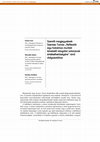
Szerzôi megjegyzések Szentes Tamás "Reflexiók egy hatalmas munkát követelô vizsgálat adatainak ér... more Szerzôi megjegyzések Szentes Tamás "Reflexiók egy hatalmas munkát követelô vizsgálat adatainak értékelhetőségére" címû dolgozatához Megtisztelő, hogy Szentes Tamás akadémikus időt szentelt dolgozatunk áttekintésére, és jelentős terjedelemben fogalmazta meg markáns véleményét. A felvetéseivel kapcsolatos észrevételeinket reflexióinak sorrendjében tesszük meg. Tételes megjegyzéseink előtt azonban elengedhetetlennek tartjuk annak körvonalazását, hogy mi mit tekintettünk kiindulási pontnak a habilitáció funkcióját illetően. A habilitáció intézménye a német orientációjú felsőoktatás sajátosságaira vezethető vissza. A német rendszerben a promóció (promotion) a címet megszerezni kívánó kutatói képességeit méri, de nem mond arról semmit, hogy a jelölt tud-e oktatni. Az oktatási képességet (venia legendi) egy adott tudományos területen a habilitáció (habilitation) méri. A habilitációhoz egy habilitációs dolgozatot is be kell mutatni Németországban, Ausztriában és Svájcban egyaránt (e helyen eltekintünk a lengyel, brought to you by CORE View metadata, citation and similar papers at core.ac.uk

Journal of Futures Studies, Nov 1, 2007
Prospective ascription of responsibility is hypothetical, commonly noting or setting conditions f... more Prospective ascription of responsibility is hypothetical, commonly noting or setting conditions for critical judgment or liability if some event occurs or fails to occur, thus determining vulnerability to retrospective judgments. Prospective liabilities can be classified by source, by type or degree (if any) of accompanying control, and by structure or stages. But not all prospective responsibility can be understood in terms of liability. Actual or de facto control over X and/or responsibility for Y (persons, animals, inanimate things, etc.), though they may involve prospective liabilities, may not be responsibilities to any person in particular. Such responsibilities may be called responsibilities in rem and distinguished from those assignable to persons (responsibilities in personam). Though prospective responsibility judgments often provide the most important grounds for retrospective judgments, if the concern is with the meaning of responsibility judgments, retrospective responsibility judgments are more basic. For, while we can understand retrospective judgments even though we know nothing of prospective ones, the opposite is not true

Futures, Aug 1, 2006
The significant social changes and unstable social-economic processes we are undergoing require m... more The significant social changes and unstable social-economic processes we are undergoing require more participation and more future oriented grassroots activity both in designing the possible future alternatives and in the actions for the realization of them. Action oriented futures studies and participatory futures studies are in close connection, because orientation towards actions and participation of non-professionals can be strengthened by their mutual interdependence in futures work. This study gives-as examplessummaries of four Hungarian case studies using participatory futures methods: one case from the field of vocational training, two cases concerning regional development, and one about national social-economic development. Our experience shows that such selected groups have evaluated the present issues in their environments as well as the closer and broader regional issues in authentic ways. The future alternatives that were outlined regarding the future of vocational training, acceptable future alternatives of domestic social-economic development, and future living conditions of a smaller settlement and in a larger town, reflected obligation, responsibility and personal interest. That non-professionals lack sufficient future orientation, and do not see possibilities to take serious actions for the future is a read problem. Fortunately, it seems that the future and action oriented attitude of the individuals might be further developed by the use of partnership education.
Opus et educatio, Aug 16, 2016

Opus et educatio, Jun 2, 2019
A magyar jövőkutatás 50 éves: visszapillantás és előre tekintés Az intézményes magyar jövőkutatás... more A magyar jövőkutatás 50 éves: visszapillantás és előre tekintés Az intézményes magyar jövőkutatás kialakulását segítő nemzetközi és hazai tényezők, 1968 és ami előtte volt Az emberiség történelmében számos nevezetes korszak, időpont található, amelyek jelentősége kiemelkedik a többi közül. Ilyen például 1848. március 15-e, a XIX. századi forradalom és szabadságharc méltán ünnepelt kezdőnapja, 1945, a II. világháború befejező éve, vagy az 1968-as év. Az 1968-as év ismert lett az európai diáklázadásokról, az orosz csapatok bevonulásáról Csehszlovákiába és az új magyar gazdasági mechanizmus kezdeteiről. 1968 a jövőkutatók-köztük a magyar jövőkutatók-számára kiemelt fontosságú év, hiszen akkor alakult meg a jövő nagy horderejű kérdéseit vizsgáló Római Klub, akkor jelent meg magyarul C. A. Clarke A jövő körvonalai c. könyve (Clarke, 1968). Érdekes és vonzó volt azt tudni, hogy az Apolló-8 amerikai űrhajó Hold körüli pályára állítása-1968. december 24-én három emberrel a fedélzeténjövőkutatási módszerek felhasználásával kidolgozott tervre épült. A jövővel való tudományos foglalkozást ösztönözte, hogy az 1960-as években olyan globális jelenségek voltak megfigyelhetőkmint pl. a világ népességszámának exponenciális növekedése, a meg nem újuló erőforrások kimerülésének gyorsuló üteme, a környezetszennyezés minden addigit meghaladó fokozódása-, amelyek önmagukban is, de egymáshoz kapcsolódva még inkább a világ jövőjét jelentősen befolyásoló tényezőkké váltak. Nem lehetett megkerülni a velük való foglalkozást. Az 1960-as évek globális és hazai gazdasági, társadalmi és kulturális körülményei és jelenségei megteremtették a távlatos, komplex, alternatívákban történő gondolkodás feltételeit. Hazánkban az intézményes jövőkutatás és egyetemi szintű oktatásának kezdetei is erre az évre tehetők. Az intézményes magyar jövőkutatás létrejöttét számos nemzetközi és hazai tényező ösztönözte és segítette. A tudományos gyökerek már léteztek. A hazai jövőkutatás épített az akkor 40 éves prognosztikára és a 25 éves futurológiára. Morgenstern 1928-ban megjelent munkáját tekinthetjük a gazdasági prognosztika kezdetének (Morgenstern, 1928). Flechtheim 1943-ban alkotta a futurológia szót, és rá két évre publikálta a jövővel való foglalkozás oktatásának fontosságát (Flechtheim, 1945). 1 Az 1960-as években sorra jelentek meg a jövővel foglalkozó tudományos könyvek, tanulmányok, cikkek. Ayres (1969) a technológiai előrejelzés és a hosszú távú tervezés kérdéskörét kapcsolta össze, Jantsch (1967) bemutatta az alapvető előrejelzési módszereket. Fourastié (1965) felhívta a figyelmet arra, hogy az ezredfordulóra a felére csökken az éves munkaidő, ezért nagy kérdés, hogy a hihetetlenül megnövekvő szabadidőt hogyan fogják felhasználni. Érdekesnek tartottuk Clarke magyarul is megjelent könyvét (1968), elsősorban a józan ész és a képzelet csődjéről írtakat. Jungk és Galtung (1969), valamint Baade (1961) az ezredfordulóra irányította a figyelmünket. Kahn és Wiener könyve (1969) a világ egészére kiterjedő, távlatos szemléletet tükröző, módszertanilag jól megalapozott munkájával érdeklődésünk középpontjába került. A jövő felé irányultságot és érdeklődést fokozta az ezredforduló közelsége, hiszen kevés generáció élt meg ilyen jelentős fordulópontot. A jövő egyre közelebb került
Futures, Jun 1, 2002
Using the so-called Transition Paradox for methodological renewal in futures studies, this articl... more Using the so-called Transition Paradox for methodological renewal in futures studies, this article derives one paradox plus six dilemmas. The analysis concludes that methodological renewal should be embedded in the renewal of science. The power of new paradigms depends on how much they serve the long run welfare, stability and existence of the whole world population. Methods-and the breakthrough strategies of the East-Central European countries-are intended not only for outlining visions, but also for creating their technological, institutional and other foundations so that they do not remain merely utopias.
Statisztikai szemle, May 7, 2019

Magyar tudomány, Oct 1, 2019
A tanulmány ötven év hazai jövőkutatási tevékenységét és tapasztalatait összegezve mutatja be az ... more A tanulmány ötven év hazai jövőkutatási tevékenységét és tapasztalatait összegezve mutatja be az intézményes tudományos jövőkutatás főbb eredményeinek fejlődési ívét. Két korszakot különböztet meg: a jövőkutatás horizontális és vertikális kiépülésének időszakát és az instabil állapotok kezelésének időszakát. Az intézményes hazai jövőkutatás fejlődésében jelentős szerepet töltött be a Magyar Tudományos Akadémia IX. Osztályának keretében 1976 óta működő Jövőkutatási (2011 óta: Statisztikai és Jövőkutatási Tudományos) Bizottság. Jövőkutatóink lelkes csapata értékes publikációkkal, konferenciák szervezésével és színvonalas egyetemi szintű oktatással járultak hozzá az egyetemes jövőkutatási ismeret-és tudáshalmazhoz. Nemzetközi kapcsolatainkat erősítették a kutatási együttműködések és a baráti kapcsolataink. A magyar jövőkutatók világosan látták, hogy alapvető jövőformáló szerepe a társadalmi innovációnak és az oktatásnak van, ezért mindent megtettek a tudományos kutatás és az oktatás mindenkori szerves kapcsolatáért.
Statisztikai szemle, 2017
Society and Economy, May 25, 2010
The paper 2 presents how the Committee on Futures Research, within Section IX. of the Hungarian A... more The paper 2 presents how the Committee on Futures Research, within Section IX. of the Hungarian Academy of Sciences (HAS), sees the possible futures for Hungary for the year 2025, based on the expertise of Hungarian futurists and social scientists, including the opinions of younger generations. It offers insight to Hungarian society in 18 years from 2007, when the research began. In cooperation with experts coming from diverse scientific backgrounds and with those who feel responsibility for the future and are willing to act upon it, we need to continue discovering our horizon albeit in a different way and to embark on new roads. In summary, we need to change the HOW and the WHAT.

Futures, 2013
Abstract The study offers an insight to the project called “Hungary 2025” that aimed at building ... more Abstract The study offers an insight to the project called “Hungary 2025” that aimed at building future alternatives based on complex understanding of the future. With the younger generations in focus the research went beyond discovering the future orientation of youth and developed complex social futures alternatives. Our paper introduces the methodological approach and the empirical foundations of the project as well as its results. In the research process a new methodological approach was developed based on complexity, participativity and alternativity. The toolkit applied included trend observation, stakeholder involvement and scenario-building as well. The empirical base of the research was a mass survey of young people complemented with an expert survey which together offered a double-fold insight into the fears and hopes characterizing our futures. The results of the survey are presented in the study along with the emerging patterns that later in the process were used as an input to build social alternatives of the future.
Social Change Review, Dec 1, 2016
Social and economic sustainability of countries globally largely depend on how well educational s... more Social and economic sustainability of countries globally largely depend on how well educational structures are capable of empowering future generations with skills and competencies to become autonomous and active citizens. Such competency is future planning, which is vital in the identity formation of youth in their developmental phase of emerging adulthood. The article below attempts to elaborate a predictive model of future orientation based on current and future norms, future interest and concern. The model was tested on a sample population of business school students (N=217) in their emerging adulthood. Norm acceptance ranking proved to be different for present and future times. Amongst a number of contextual variables shaping the formation of future plans concern has been found to hold the strongest predictive power.
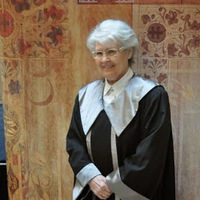
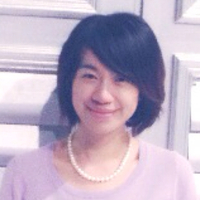


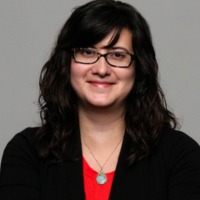





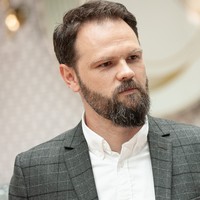
Uploads
Papers by erzsebet novaky